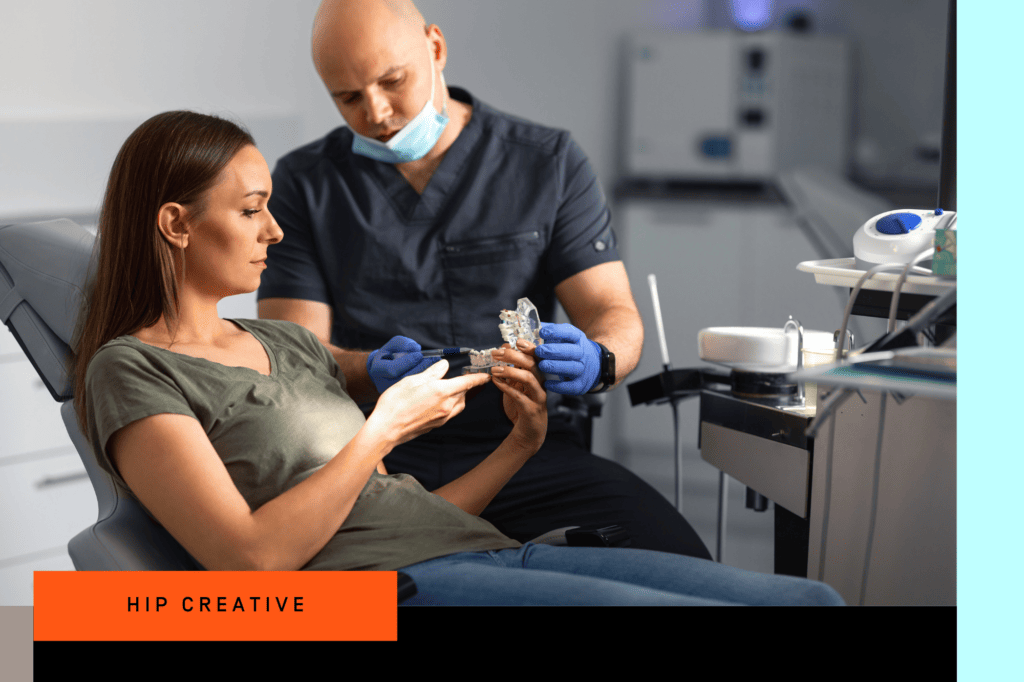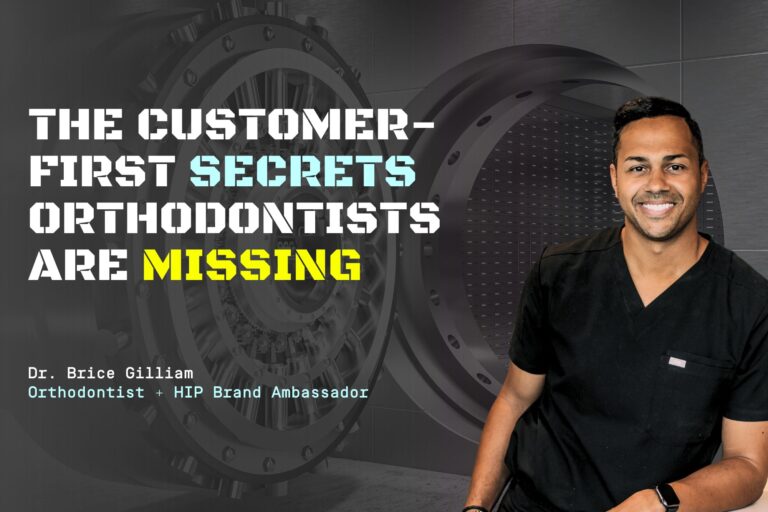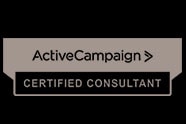If you’re considering a career in oral health, becoming an orthodontist can be a fulfilling and lucrative career. According to Indeed.com, the average orthodontist makes $50,000 per year more than the average general dentist, which adds up to over $2M in lifetime earnings over the course of a career!
It’s clear that becoming an orthodontic specialist is a profitable career path, but there’s a reason for that. It’s also a long and challenging road to choose. Orthodontists need more time and often accumulate more debt than general dentists while achieving their goals.
Let’s look at the path to becoming an orthodontist and how long you can expect to be in school before you start practicing.
Key Takeaways
- Becoming an orthodontist requires over a decade of education, including a bachelor’s degree, dental school, and a 2-3 year orthodontic residency.
- As an aspiring orthodontist, you’ll need to pass a series of exams, like the DAT and NBDE, obtain state licensing, and continue your education to keep your certifications current and stay updated on trends and technology.
- The orthodontic profession offers you a wide range of career paths and specialties, promising a financially rewarding future due to high demand and anticipated job growth.
How Long Does It Take To Become An Orthodontist?
Becoming an orthodontist requires 10 to 11 years of education and training beyond high school. First, you’ll need to complete an undergraduate university degree, followed by dental school and an orthodontic residency program. Along the way, you’ll need to pass various exams and compete for acceptance to highly competitive programs.
Let’s take a detailed look at each stage and the timeline that awaits on your path to this rewarding career. While pursuing a career as an orthodontist is indeed an adventure, the fulfilling result of transforming people’s lives and smiles can make it all worthwhile.
Years 1-4: Earn A Bachelor’s Degree
The first step toward earning the title of an orthodontist is attaining an undergraduate education at a college or university. If you’re like most students, you can expect earning your bachelor’s degree to take about four years. Your undergraduate studies will give you a solid scientific foundation to build on in the next steps of your journey.
Your coursework as a pre-dental student will be nearly identical to that of a pre-med student. While you’re not required to choose any specific major, choosing a course of study focused on science is essential. Some schools may offer a suggested pre-dental program, but it’s up to you to understand what prerequisites your target dental schools may ask for.
Courses in biology, chemistry, and math are prerequisites to ensure you get a strong foundation for subsequent dental education. Dental school is competitive, so potential orthodontists must work hard to maintain high grades to earn a spot in their preferred dental school class.
Years 5-8: Dental School
After you’ve earned your bachelor’s degree, your next step is to secure acceptance into dental school. Be forewarned that dental school admissions is a highly competitive process. You’ll need to take the Dental Admission Test (DAT), which evaluates your understanding of natural sciences, perceptual ability, reading comprehension, and quantitative reasoning. Dental schools will also consider your academic performance, especially in science classes, extracurricular activities, volunteer work, or relevant work experience. Expect to attend an in-person or online interview to assess your motivations and interpersonal skills as well.
Once you’re accepted into the dental school of your dreams, you’ll start a brand new journey. These four years will be filled with in-depth dental coursework and hands-on experience in dental medicine. The curriculum gives you a comprehensive understanding of general dentistry and equips you with the skills you’ll need to practice as a general dentist.
Dental school graduates earn either a Doctor of Dental Surgery (DDS) or a Doctor of Medical Dentistry (DMD) degree. They’re functionally equivalent, with both of them qualifying you to practice as a dentist and no significant advantage or disadvantage versus the other.
Once you have your DDS or DMD you’re officially a dentist, but you’re still not done. You’ll need to pass the National Board Dental Examination (NBDE) before starting your orthodontic residency, which is the next step of your journey to a career as an orthodontic professional.
Years 9-11: Orthodontic Residency
To finish your journey and become an orthodontist, you’ll need to complete an orthodontic residency after dental school. Residency programs last 2 to 3 years and are highly competitive. You’ll often be vying with dozens of applicants for just a few coveted spots.
During this multi-year orthodontic school residency program, you’ll get intensive hands-on training to prepare you to deal with mispositioned teeth, crowding, bite issues, misaligned jaws, and other issues many orthodontists must tackle daily.
Some residency programs offer you the option to earn a Master’s degree in parallel, which can be a worthwhile investment if you plan to teach or conduct research in the field.
Essential Exams & Certifications
Key exams and certifications mark each milestone on your path to becoming a board-certified orthodontist. From the Dental Acceptance Test (DAT) to the National Board Dental Examination (NBDE), each exam is a crucial step towards achieving your certification in orthodontics.
Let’s take a look at each of them in more detail:
Dental Acceptance Test (DAT)
You’ll take the Dental Acceptance Test (DAT) toward the end of your undergraduate experience. Most students take it during the second semester of their junior year or the summer before their senior year.
The DAT is required for acceptance to any dental school. The exam is intensive and wide-ranging, assessing skills and knowledge through written and practical tests, including:
- The natural sciences
- Perceptual ability
- Reading comprehension
- Quantitative reasoning
You’ll need to shoot for a DAT score of 20 or above in all sections if you want to be competitive for admission into top-tier dental schools, so study hard!
National Board Dental Examination (NBDE)
After you’ve tackled the DAT and graduated dental school, your next big challenge will be the National Board Dental Examination (NBDE). This examination ensures you’ve gained the knowledge and skills to practice dentistry safely and effectively. And it’s a requirement for licensure, so you will need it to start an orthodontic residency!
The NBDE is a comprehensive test assessing a broad spectrum of topics fundamental to dentistry and orthodontics. The exam is divided into two parts: Part I and Part II.
Part I of the NBDE covers the basic sciences, including general anatomy, biochemistry, physiology, microbiology, pathology, and dental anatomy. You’ll usually take this part of the exam after your second year of dental school.
Part II of the NBDE focuses on clinical dental topics, like operative dentistry, pharmacology, endodontics, periodontics, oral surgery, orthodontics, pediatric dentistry, prosthodontics, patient management, and oral pathology. You should plan to take this part during your last year of dental school.
The NBDE exams are comprehensive and challenging, even for the best students. They’re designed to test both your knowledge and understanding of the science of dentistry and your ability to apply this knowledge in practice.
State Licensing & Orthodontic Board Certification
Once you’ve passed the NBDE, your final hurdle is to get a separate orthodontist license and consider an orthodontic certification. Part of this step will vary depending on where you live.
In most places, the state’s dental board is in charge of the licensing process. They are responsible for ensuring you have all the knowledge and skills you need to do your job safely and effectively. So, you’ll need to pass a state licensing exam. The American Dental Association has put together an interactive map to help you determine the licensing requirements in your state.
Unlike licensing, board certification isn’t required to begin practicing as an orthodontist. However, being certified by a recognized orthodontic board like the American Board of Orthodontics (ABO) can be a boost to your career. It shows that you’re committed to the highest standards in your specialty and may help you build trust with patients or land better jobs.
Continuing Education Requirements For Orthodontists
Congratulations! You’ve finished 11 years of classes and hands-on training. You’ve passed the NBDE and obtained state licensure as an orthodontist. It’s time to celebrate!
You’re all done now, right? Well, not quite…
Most orthodontists continue to follow updates in technology and procedures because they care about doing the best for their patients. However, continuing education is also often a requirement set by state licensing boards for dentists and orthodontists. Check out your state’s Continuing Education Requirements to be sure you know what to expect.
Continuing Education (CE) Credits can be earned in many ways, from workshops and seminars to online courses and peer-reviewed journals. By actively growing your knowledge, you can provide your patients with the highest level of care and maintain your legal right to practice.
Orthodontic Specialties & Career Paths
Orthodontics is a wide-ranging field, providing you with several dental specialty options and career trajectories once you’ve acquired your license to practice. Some options include:
- Start A Private Practice — Get the freedom to manage your business, grow your income, and provide care to patients on your own terms.
- Work In A Private Practice — Be part of an established practice to provide a more stable income, learn and perfect your skills, and avoid the administrative challenges of owning a practice.
- Work For A Corporate Ortho Firm — Be part of a larger corporation that operates multiple dental offices, providing a consistent flow of patients and access to the best resources.
- Craniofacial orthodontics — Collaborate with other healthcare professionals to treat patients with congenital disabilities such as cleft lip and palate.
- Academic Orthodontics — Teach future orthodontists at universities and conduct groundbreaking research in the field of orthodontics.
- Community Dental Clinic — Provide services in community health centers, often serving low-income or underserved populations.
Each path offers its unique challenges and rewards. But after 11 years of hard work, you’ve earned the right to choose the path that most interests you.
Challenges & Rewards Of The Orthodontic Profession
As you head down the road toward the field of orthodontics, you’ll realize that it’s a profession with its fair share of challenges and rewards. The path to becoming an orthodontist is competitive and filled with late-night cram sessions and rigorous training. It’s a challenge and, more importantly, an investment in your future.
But the financial and personal rewards of a career in orthodontics are massive. Just imagine the satisfaction you’ll feel when you witness the transformation in your patients’ smiles. Think about the relationships you’ll build over the years serving your community. And, of course, the comfort and flexibility that comes with financial success. These moments will ensure all your hard work and dedication pay off.
So, as you step into this journey, remember that the challenges are just stepping stones on your path to success. And when you finally achieve your goal, the rewards will be more than worth it.
Skills & Qualities Of A Successful Orthodontist
Becoming an orthodontist requires more than academic excellence; it also entails developing the appropriate skills and qualities. Some of the critical skills and qualities needed include:
- Communication Skills — Orthodontists must listen, empathize, and motivate their patients for successful treatments.
- Organizational Skills — Strong organizational skills are vital for running a successful and profitable practice.
- Problem-Solving Skills — Orthodontists must identify and solve unanticipated problems that may arise during treatment.
You can become an orthodontist and succeed in this field by developing these skills and qualities.
Industry Outlook & Salary Expectations
According to a report by Fortune Business Insights, the US orthodontic market is expected to DOUBLE to over $32 billion by 2030. At that rate, there won’t be enough orthodontists to fill the demand! So aspiring orthodontists, including dental students and general oral health personnel, can look forward to a promising future!
According to the Indeed.com breakdown discussed above, the average orthodontist earns over $280,00 per year — $50,000+ more than the average general dentist. With the growth in the overall market and high-end elective orthodontic procedures, that gap should only increase over the next decade.
Welcome To The Finish Line!
Now, you should have all the information you need to decide on orthodontics as a field of study and future career. We started with a simple question — How long does it take to become an orthodontist? Hopefully, now you know the answer to that question and can also envision exactly what your path would look like and the steps you need to take to get there.
If you pursue a career in orthodontics, the next decade of your life will be dedicated to learning and practical application. So, get ready for a new challenge and an incredible adventure!
Frequently Asked Questions
What is the shortest time to become an orthodontist?
It takes a minimum of 10 years to become an orthodontist, including four years for undergrad, four years for dental school, and at least two years for orthodontic residency. So, it’s simply not possible to become an orthodontist in a shorter time.
Is it harder to become a dentist or orthodontist?
Becoming an orthodontist is more challenging than becoming a dentist due to the additional 3-year MDS course after completing the 5-year BDS. It requires more rigorous training and specialization.
Do orthodontists go to med school?
No, orthodontists do not go to medical school. Instead, they attend dental school for four years, focusing on basic science coursework and clinical experience.
What exams are required to become an orthodontist?
To become an orthodontist, you must take the Dental Acceptance Test (DAT) for dental school admission, the National Board Dental Examination (NBDE) for licensure, and additional exams for state licensing and orthodontic certification. Good luck on your journey!










